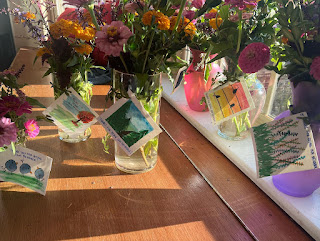Community, Heal Thyself
About 15 years ago, non-profit and public service providers in Cowlitz County, Washington were trying to figure out why a neighborhood still made the most 911 calls despite great planning and programming in that neighborhood.
The prevailing wisdom was that the neighborhood was dangerous because it was dark outside people’s homes and stayed dark because people liked it that way. It helped conceal criminal activity.
But the coordinator for the service collaborative knew she needed to engage with residents and learn what they thought.
So she went house by house to talk to people.
In discussions with community residents, it became clear that residents saw things differently.
Some warned her that the neighborhood was dangerous once it got dark.
But others felt it was a simpler issue: it was dark because people couldn’t afford light bulbs outside their homes. The darkness made people feel like they didn’t have control over their safety, leading to negative assumptions that further exacerbated the problem.
So the residents and the coordinator crafted a simple solution. After giving residents advance notice, they recruited volunteers from local neighborhood organizations to count the number of outdoor light fixtures missing bulbs. They got bulbs donated by a local hardware store, and they scheduled a free barbecue and community lighting ceremony.
Residents named the event Take Back the Light, and when the lights came on, the music started, and the food was served, barriers broke down even further.
Neighbors talked to neighbors they had been wary of, and everyone saw their role in addressing a problem important to the community. Residents who previously had no formal leadership role in the community became leaders because of their involvement with Take Back the Light.
Success belonged to the group, and the community’s capacity grew. They began to talk about other challenges in their neighborhood that needed to be addressed. This community saw youth arrests for violent crime drop by 53 percent. They also saw high school dropout rates decline 47 percent, and births to teen mothers went down 62 percent.
One of the key phases of the Self-Healing Community Model is leadership expansion. Expanding the circle of people actively engaged in leading community improvement efforts. There is still time to register for MU Extension Neighborhood Leadership Academy at extension.missouri.edu. We will have a cohort of Republic residents doing the class together.
Stories like this illustrate the core components of the Self-Healing Community Model that Laura Porter and her colleagues developed in Washington in the 1990s. This model helps communities build their own capacity to define and solve problems. Best of all it demonstrates that you can be part of the answer for your neighborhood!





Comments
Post a Comment